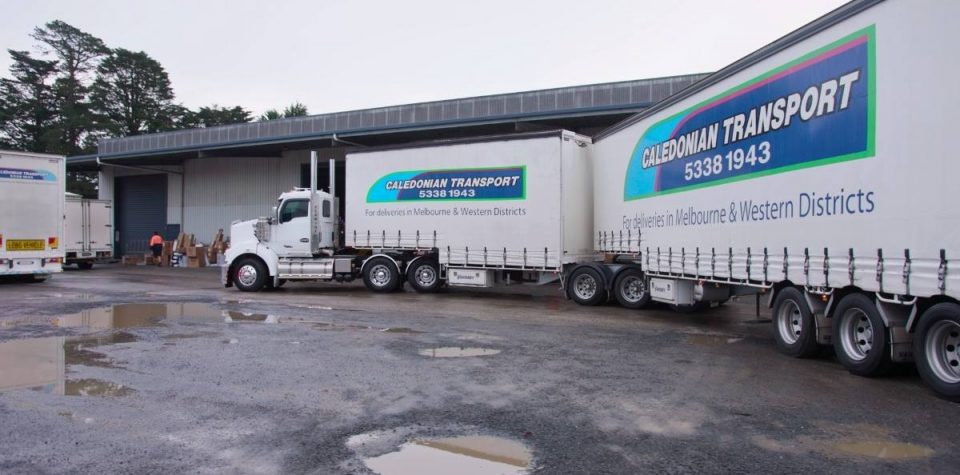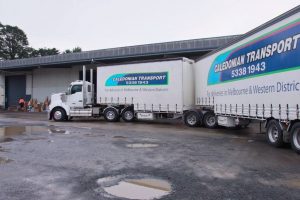Table of Contents:
- Reliable Fuel Supplies: The Backbone of Australian Operations
- Streamlining the Supply Chain
- Navigating the Urban Jungle: Traffic Management and Route Optimisation
- Safety First: Ensuring Secure Fuel Transport
- Fueling Australia's Future.
In the vast expanse of the Australian landscape, ensuring a steady supply of fuel is a logistical challenge of paramount importance. Whether your staff are zipping around Sydney in vans or hauling big loads on the Tanami Track, fuel is going to be of critical importance to your operation. From bustling urban centres to the remote mines and stations of the Outback, a well-oiled logistics system powered by cutting-edge software is the lifeline that keeps the nation’s fuel flowing.
But how do petrol and diesel get from the refinery to the tanks of your delivery fleet? This article delves into the critical facets of fuel logistics in Australia, shedding light on the indispensable role played by logistics software in maintaining regular fuel supplies, managing traffic, optimising routes, upholding safety standards, and promoting environmental sustainability.
Reliable Fuel Supplies: The Backbone of Australian Operations
Fuel serves as the lifeblood of the Australian economy, fueling not only vehicles but also essential industries, from mining and agriculture to transportation and construction. As a nation known for its vast distances and remote regions, the reliability of fuel deliveries is paramount to sustaining operations across the continent.
The reliability of fuel supply
According to a report published in 2022 by The Australia Institute, almost three-quarters of Australia’s fuel consumption is taken up by the transport industry. The report also highlighted the lack of refining facilities in Australia and our almost total reliance on imported petrol, diesel and other oil products.
The report went on to note that the “International Energy Agency (IEA) guidelines require Australia to hold 90 net import days worth of fuel. We currently hold only 68 ‘IEA days’ of reserve, but average daily consumption over the last year means current stocks are only expected to last 32 days. The Australian Government tries to bolster this by including some 21 days of fuel in transit to Australia or onboard ships docked in foreign ports – the majority of which are foreign vessels. There is no guarantee that this fuel would reach Australia in the event of a crisis. Our strategic fuel supply is particularly vulnerable as our two remaining refineries are set up to produce largely petrol rather than aviation fuel and diesel.
Long and vulnerable supply chains
The global oil market in general, and Australia in particular, heavily relies on vital maritime routes known as Sea Lines of Communication (SLOCs). These critical waterways play a pivotal role in ensuring the secure transportation of energy resources.
The most crucial are the Strait of Hormuz, the Malacca Strait, and the South China Sea.
- Strait of Hormuz. In 2018, approximately one out of every three barrels of oil traded worldwide traversed the Strait of Hormuz, situated between Oman and Iran. This route saw an average of 21 million barrels per day.
- Malacca Strait. Closer to Australia, the Malacca Strait, which runs between Malaysia, Singapore, and Indonesia, facilitated around one-third of global oil trade in 2018. This amounted to 19 million barrels per day.
- South China Sea. Trade passing through the South China Sea constitutes over a third of all global shipped trade. Additionally, this region is notorious for being one of the world's most disputed and contested waterways.
Streamlining the Supply Chain
With these statistics in mind, efficient and robust fuel logistics systems can be seen as a critical component in Australia’s energy supply network. Logistics software systems have revolutionised the way fuel is managed and transported across Australia. These sophisticated solutions provide real-time visibility into the entire supply chain, ensuring that fuel deliveries remain timely and efficient.
- Real-Time Tracking. Advanced GPS technology allows for real-time tracking of fuel shipments, enabling companies to monitor their exact location and estimated time of arrival.
- Inventory Management. Logistics software helps companies maintain optimal fuel inventory levels, ensuring that shortages are minimized while avoiding excess storage costs.
- Demand Forecasting. From the summer holidays to the grain harvesting season, fuel companies need to be highly proactive in forecasting when demand for fuel will dip and peak. Predictive analytics and machine learning algorithms help forecast fuel demand, allowing for proactive supply chain management.
Navigating the Urban Jungle: Traffic Management and Route Optimisation
Traffic congestion in urban areas poses a significant challenge for fuel transporters. Effective traffic management is essential to prevent delays and ensure on-time deliveries. Logistics software systems are capable of providing accurate and effective route planning and optimisation to make sure that fule delivers get there on time.
- Dynamic Routing. Logistics software dynamically adjusts routes in response to real-time traffic conditions, helping drivers avoid congested areas and minimise delivery times.
- Traffic Alerts. Automated traffic alerts keep drivers informed of road closures, accidents, and other obstacles that may impact their route.
Route Optimisation
In a country as vast as Australia, optimising delivery routes is crucial to minimize fuel consumption and reduce operational costs.
- Shortest Path Algorithms. Logistics software employs sophisticated algorithms to calculate the shortest and most fuel-efficient routes, taking into account factors like road quality, terrain, and traffic.
- Environmental Considerations. Route optimisation also considers environmental factors, such as minimising carbon emissions by selecting eco-friendly routes.
Safety First: Ensuring Secure Fuel Transport
The transportation of fuel demands adherence to strict safety standards to mitigate risks and prevent accidents. Logistics software can plan, execute and monitor all facets of safety and compliance, from pickup to delivery, to ensure the safety of your drivers, your cargo, the general public and the environment.
- Compliance Monitoring. Logistics software tracks compliance with safety regulations, ensuring that vehicles and drivers meet all necessary safety requirements.
- Driver Training. Integrated training modules that provide drivers with up-to-date skills regarding safety protocols and best practices can be added to logistics software packages. This enhances overall safety and gives your staff the added confidence to get the job done efficiently and profitably.
Fueling Australia's Future.
In the expansive and diverse landscape of Australia, logistics software emerges as the linchpin of fuel logistics. From ensuring a reliable supply chain to managing traffic, optimising routes, upholding safety standards, and promoting environmental sustainability, logistics software plays a multifaceted role in sustaining the nation's fuel needs.
As the industry continues to evolve, the integration of logistics software technology will continue to be a vital component in meeting the challenges of a dynamic and ever-expanding fuel logistics landscape.



